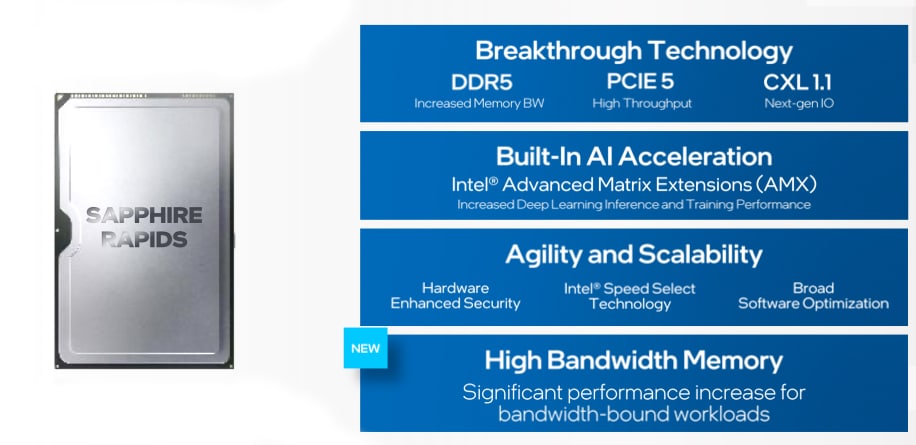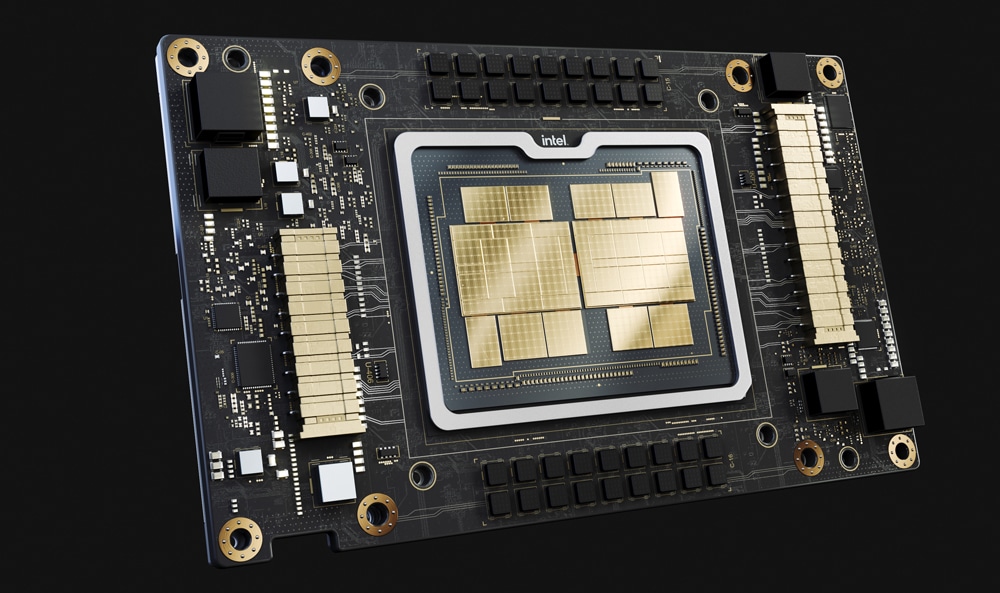Today at the 2021 International Supercomputing Conference, Intel announced that its 3rd gen Intel Xeon Scalable processors are now powering supercomputers and high-performance computing (HPC) systems. The new CPU, codenamed Intel Sapphire Rapids, integrates with high Bandwidth memory (HBM). Intel says this will be ideal for working in HPC and with AI. Other announcements today center around Intel’s Xe-HPC-based Ponte Vecchio GPU, high-performance networking, and commercial support for distributed application object storage (DAOS).
Today at the 2021 International Supercomputing Conference, Intel announced that its 3rd gen Intel Xeon Scalable processors are now powering supercomputers and high-performance computing (HPC) systems. The new CPU, codenamed Intel Sapphire Rapids, integrates with high Bandwidth memory (HBM). Intel says this will be ideal for working in HPC and with AI. Other announcements today center around Intel’s Xe-HPC-based Ponte Vecchio GPU, high-performance networking, and commercial support for distributed application object storage (DAOS).

The 3rd generation of Intel Xeon Scalable processors came out earlier this year after quite the wait. The new CPUs brought several benefits around performance, more memory, upping Optane support, and catching up with the competition in the PCIe Gen4 support. Intel states that its newest generation of processors brings unique benefits to HPC including up to 53% higher performance across a range of HPC workloads, including life sciences, financial services, and manufacturing. They go on to state that its new CPUs outperform AMD’s on key AI workloads, up to 50% better.
Intel Sapphire Rapids
To further bring value to HPC and AI workloads, Intel is announcing its Intel Sapphire Rapids CPU that integrates HMB with the CPU. This is particularly beneficial for workloads such as modeling and simulation (e.g., computational fluid dynamics, climate and weather forecasting, quantum chromodynamics), artificial intelligence (e.g., deep learning training and inferencing), analytics (e.g., big data analytics), in-memory databases, and storage. Intel Sapphire Rapids can provide a boost in memory bandwidth which in turn can boost performance. The performance can come either through the integration of HBM or in combination with DDR5 memory.
On top of the memory-based advantages or advantages to memory-sensitive applications, Intel Sapphire Rapids also support PCIe Gen5 as well as CXL 1.1. While there is not a lot of devices out leveraging these interface types, Sapphire Rapids-based platforms will be ready at the drop. The processor also comes with a built-in AI acceleration engine called Intel AMX (Advanced Matrix Extensions). Intel claims some significant performance increases for deep learning inference and training but doesn’t go into any details at this time.
Intel Xe-HPC GPU

On the GPU front, Intel is announced its Intel Xe-HPC GPU, code-named Ponte Vecchio. This GPU is based on Xe architecture but is designed specifically for HPC and AI workloads. According to the company, it will leverage Intel’s Foveros 3D packaging technology to integrate multiple IPs in-package, including HBM memory and other intellectual property. The new GPU is in the process of system validation. It will be available in an OCP Accelerator Module (OAM) form factor.
Engage with StorageReview
Newsletter | YouTube | LinkedIn | Instagram | Twitter | Facebook | TikTok | RSS Feed

